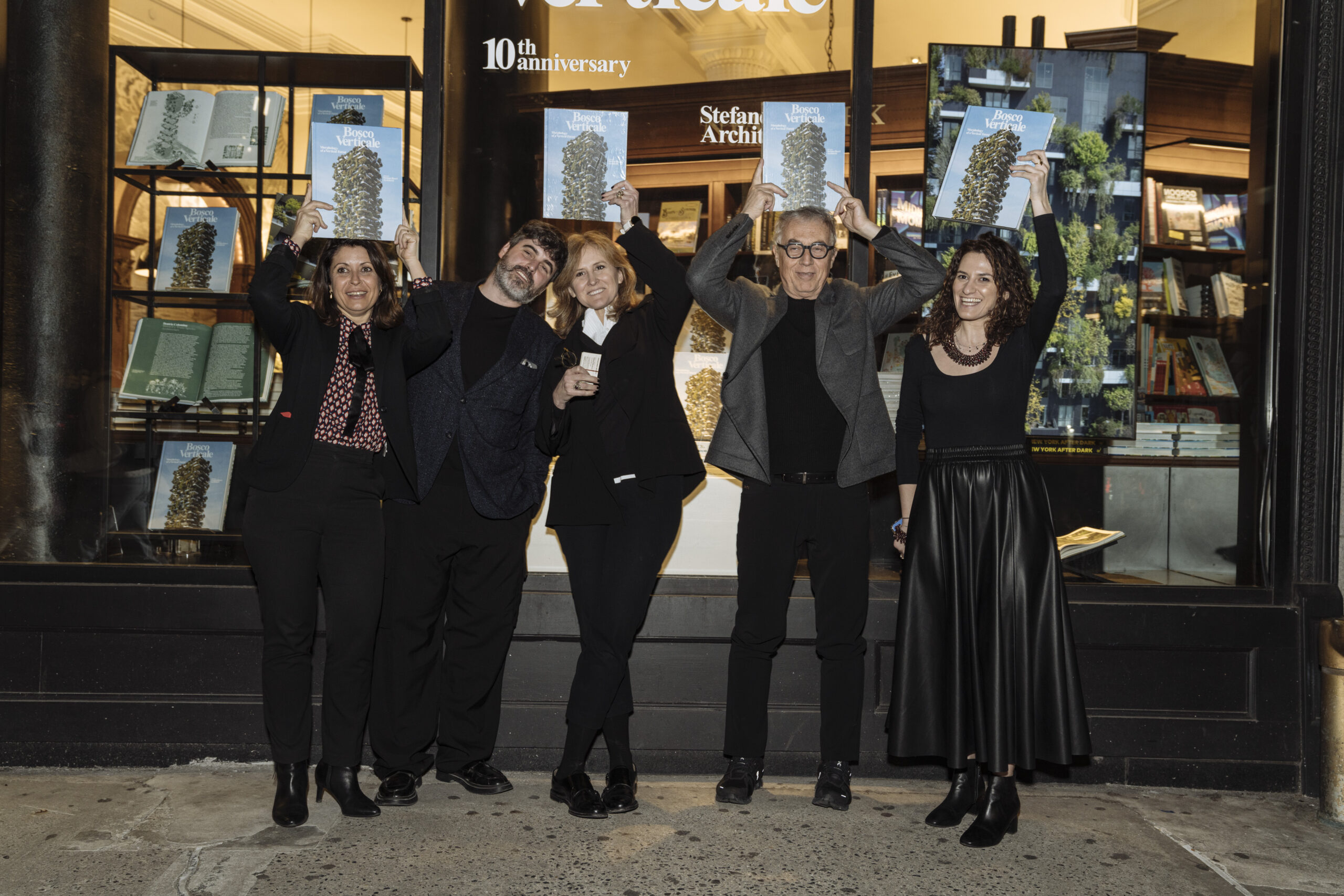On a March evening in New York, inside the Rizzoli bookstore in Midtown, two architects from Milan — Stefano Boeri and Francesca Cesa Bianchi — sat down to talk about trees. Not parks or gardens, but forests growing inside cities, on buildings and among people. They were there to present Bosco Verticale: Morphology of a Vertical Forest, a book that traces the life of Milan’s now-iconic Bosco Verticale. Part photo archive, part manifesto, the volume reflects on how a pair of residential towers covered in trees — once seen as a green stunt — helped reframe the conversation about urban living.
When the project launched ten years ago, a forest in the sky felt more like fiction than architecture. Now it’s referenced across continents, so what changed? “We didn’t build a green building,” Boeri said. “We built a habitat.” The idea was simple. Not to decorate the city with trees, but to treat them as citizens. To make them part of the urban population. Over time, the Vertical Forest became less a building and more a provocation — a question: what if nature was no longer pushed to the outskirts, but reinstalled at the heart of the metropolis?

“It’s not about exporting a format”, Boeri said. “It’s about responding to a global urgency — stitching nature back into our urban fabric”. Milan managed to shift its skyline — and its identity — by rethinking what a city should look and feel like. The idea is catching on. Similar projects are rising in places like Eindhoven, Huanggang, and Nanjing. But Boeri is already thinking bigger: What if forests weren’t confined to buildings? What if we imagined entire neighborhoods, or even cities, designed with ecosystems at their core?
In that future, buildings might generate their own energy. Trees could be part of smart networks, monitored for health and water use. Balconies would become microhabitats. Façades would function like living skins. But Boeri keeps circling back to something less futuristic and more human: care. “The real innovation is a daily relationship with living things”. he said. “That’s what changes how we live”.
Still, the skepticism hasn’t faded. Critics bring up issues related to greenwashing, privilege, the carbon footprint of building vertical gardens in concrete and steel. Boeri doesn’t dismiss it. “The trees are real”, he said. “They grow. They shed leaves. They get sick. This isn’t decoration”. The point, he insists, isn’t to make the city look greener. It’s to make it function differently. If sustainability becomes a luxury item — accessible to a few, out of reach for most — then we’ve missed the point. Real impact, Boeri argues, is about transparency, data, and above all, equity.












